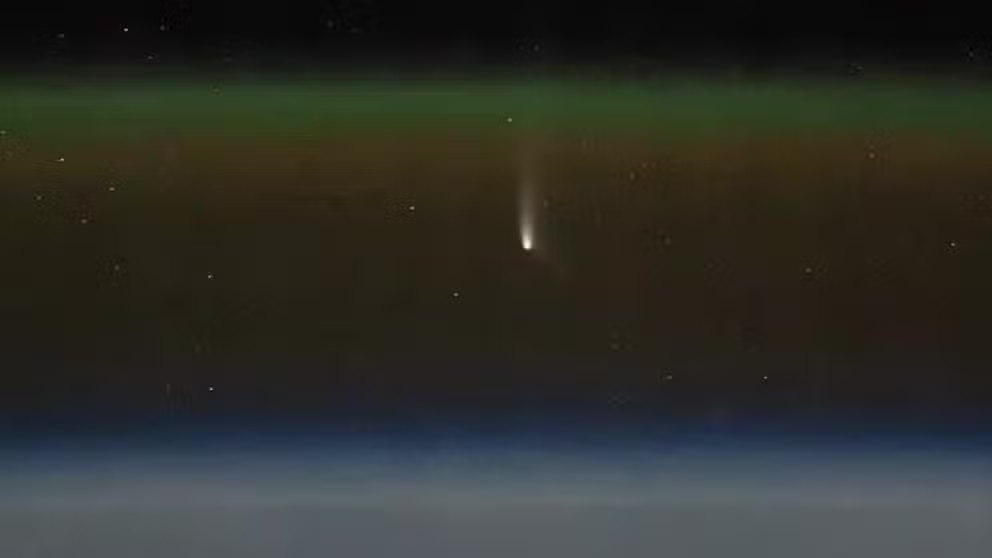Comet Tsuchinshan-ATLAS puts on show in space before possible big show on Earth
Comet Tsuchinshan-ATLAS has been tantalizing astronomers on Earth for several months since its discovery last year as there is potential the comet could be relatively bright and easily visible from Earth when it zooms by our planet in October.
Comet Tsuchinshan-ATLAS puts on show from ISS
NASA astronaut Matthew Dominick got a front row seat to Comet Tsuchinshan-ATLAS from the cupola on the International Space Station. (Video courtesy: NASA / Matthew Dominick)
Astronomers and sky watchers have their fingers crossed that an approaching comet could put on a nighttime show on Earth next month, but it’s already strutting its stuff for those in space.
NASA astronaut Matthew Dominick, who is currently on board the International Space Station, says Comet Tsuchinshan-ATLAS "looks like a fuzzy star to the naked eye looking out the cupola windows."
But get a good camera set with the correct exposure settings and compile a time lapse video, and the comet begins to show off a bit more:
Comet Tsuchinshan-ATLAS has been tantalizing astronomers on Earth for several months since its discovery last year as there is potential the comet could be relatively bright and easily visible from Earth when it zooms by our planet in October.
‘Might be one of the best comets in a long time’
Right now, it’s an anxious wait. Similar comets have had promise before, only to break up when they make their closest approach to the Sun along their orbit.
Tsuchinshan-ATLAS is expected to reach that point on Sept. 27, then spin around the sun and come back our way in the following days.
"If this comet survives its passage by the Sun… and if the amount of gas and dust it gives off does not decrease significantly, this might be one of the best comets in a long time," according to NASA’s Gordon Johnston. "If it strongly scatters sunlight towards the Earth it might even be visible in the glow of dusk just after its closest approach to Earth on October 12."
In most of the U.S., the comet is faintly visible with a telescope or binoculars in the pre-dawn hours through Oct. 4. It’ll become hidden in the Northern Hemisphere through the 11th, but reappears in the evening sky just as it makes its closest pass to Earth on Oct. 12, Johnston said.
The more optimistic forecasts suggest the comet could be easily noticeable – if it survives its sun encounter.
"The best time to look should be the evenings on and shortly after October 12 with the comet above the western horizon after sunset," Johnston wrote.
The comet will be very low on the horizon on Oct. 12 (4 degrees) but climb higher in the sky each night, allowing it more time to be visible. The trade-off is it will also be gradually dimming as it zooms back on its way out of our solar system. By the end of October it will be but a faint blip on a telescope again.
